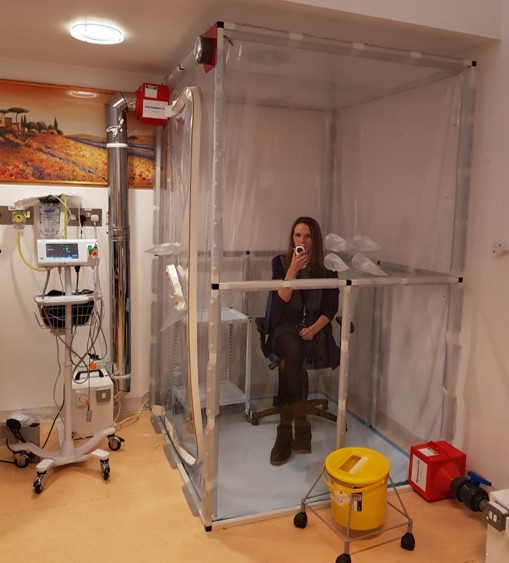University of Oxford researchers have for the first time established a controlled human infection model for tuberculosis (TB) that infects people via the lungs – the way TB enters the body.

The clinical trial, which used the BCG vaccine delivered via aerosol into participants’ lungs, is a first step towards establishing a challenge model that can be used to test new TB vaccines.
The study, whose findings have been published in The Lancet Infectious Diseases, was supported by the Bill and Melinda Gates Foundation and the National Institute for Health and Care Research (NIHR) Oxford Biomedical Research Centre (BRC).
Human challenge models have contributed significantly to the development of vaccines for diseases such as malaria or typhoid, especially in early-phase trials. They help scientists select which vaccines should be taken forward into larger field efficacy studies and could be particularly useful with pathogens like tuberculosis, where vaccine development is very difficult.
Unlike malaria and typhoid, where participants were given the virulent form of the disease, it would not be ethical to give people tuberculosis; while there are effective treatments for malaria and typhoid, no such quick, effective treatment exists for tuberculosis and there is no way of knowing for certain that a person has been cured.
The BCG vaccine was used in this trial because it is a live attenuated strain of Mycobacterium bovis – which is related to Mycobacterium tuberculosis, the bacterium which causes tuberculosis in humans – and BCG is known to be safe in humans.
Previous human challenge studies had administered the BCG in the arm, but this method does not mimic the natural route of TB infection into the lungs, which is why the aerosol method was investigated.
The research team recruited healthy people who had never before had the BCG vaccine. They were given BCG by aerosol using a nebuliser into the lungs, and a control group had BCG injected in the arm.
As this was the first time this approach had been used, the researchers gradually increased the dose to ensure it was safe and found the highest dose that did not induce troublesome side effects. They then compared how much BCG could be recovered after administering it in the lungs and through the skin.
The doses of aerosol-inhaled BCG were found to be well tolerated by the participants and there was no significant difference in the frequency of adverse events between the two groups.

Professor Helen McShane (pictured left), Professor of Vaccinology in the Nuffield Department of Medicine, who led the study, said: “When we did lung washes of the participants, we recovered BCG, which is a positive sign in a challenge study. When we eventually test a new vaccine using this method, if we can’t find BCG in the lung washings it would suggest that the vaccine has induced protection. If we hadn’t found BCG in the lung fluid, we would not have been able to move forward with this as a model.”
Professor McShane, who is Director of the NIHR Oxford BRC added: “TB is back as the number one killer among infectious diseases. It’s a really difficult pathogen to make a vaccine for, and human challenge models, such as the one we have trialled in this study will undoubtedly play a vital part in helping us to develop a vaccine. For this reason, this is an important first step in establishing that model.”
The study was primarily funded by the Bill & Melinda Gates Foundation, as well as by the Wellcome Trust, the NIHR Oxford BRC and the NIHR Clinical Research Network.
Earlier this year, Professor McShane launched another study looking at BCG given by aerosol as a vaccine, rather than a challenge agent, and comparing inhalation to vaccination administered through the skin.